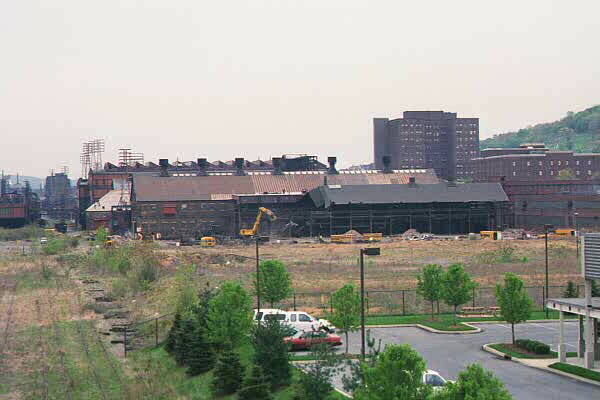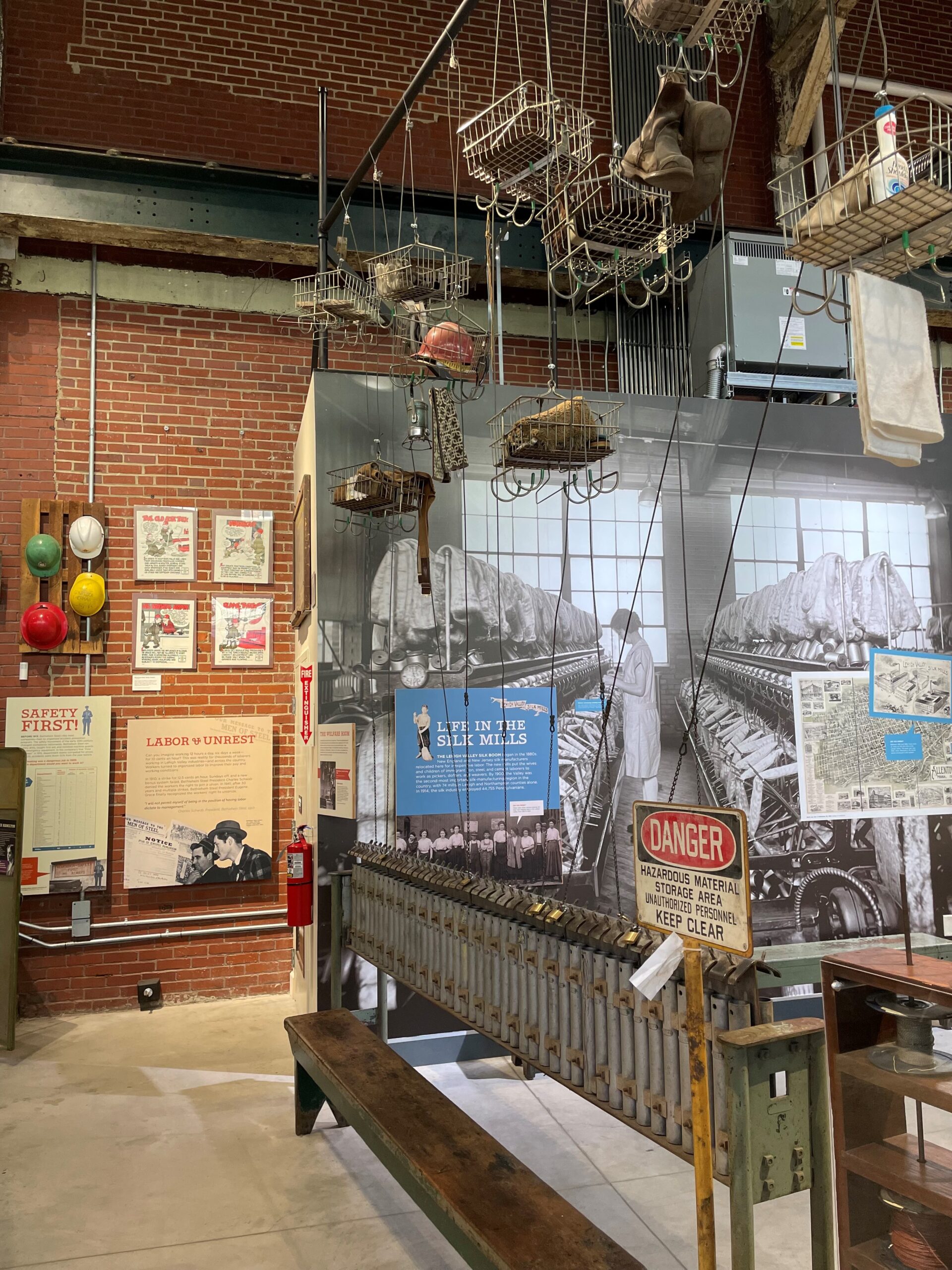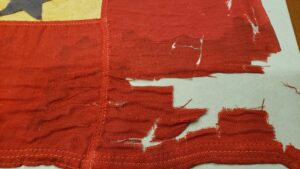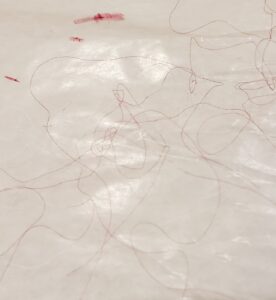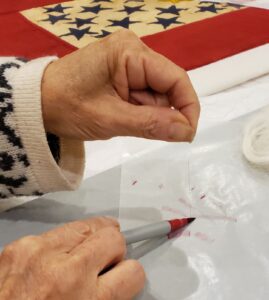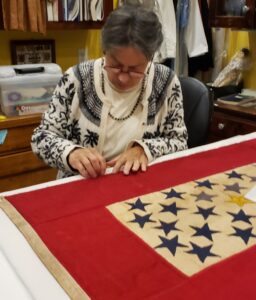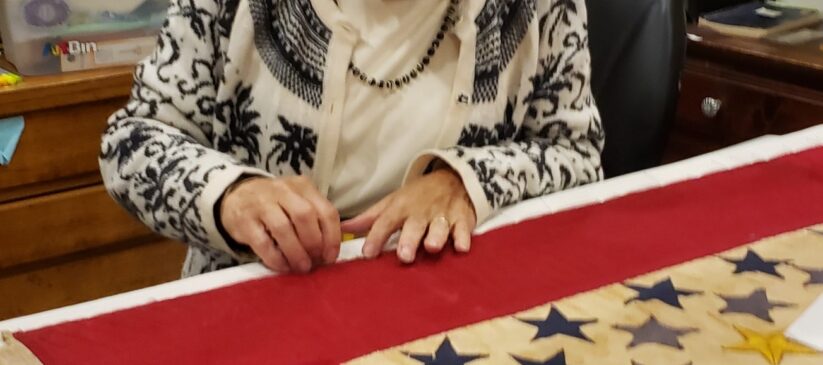
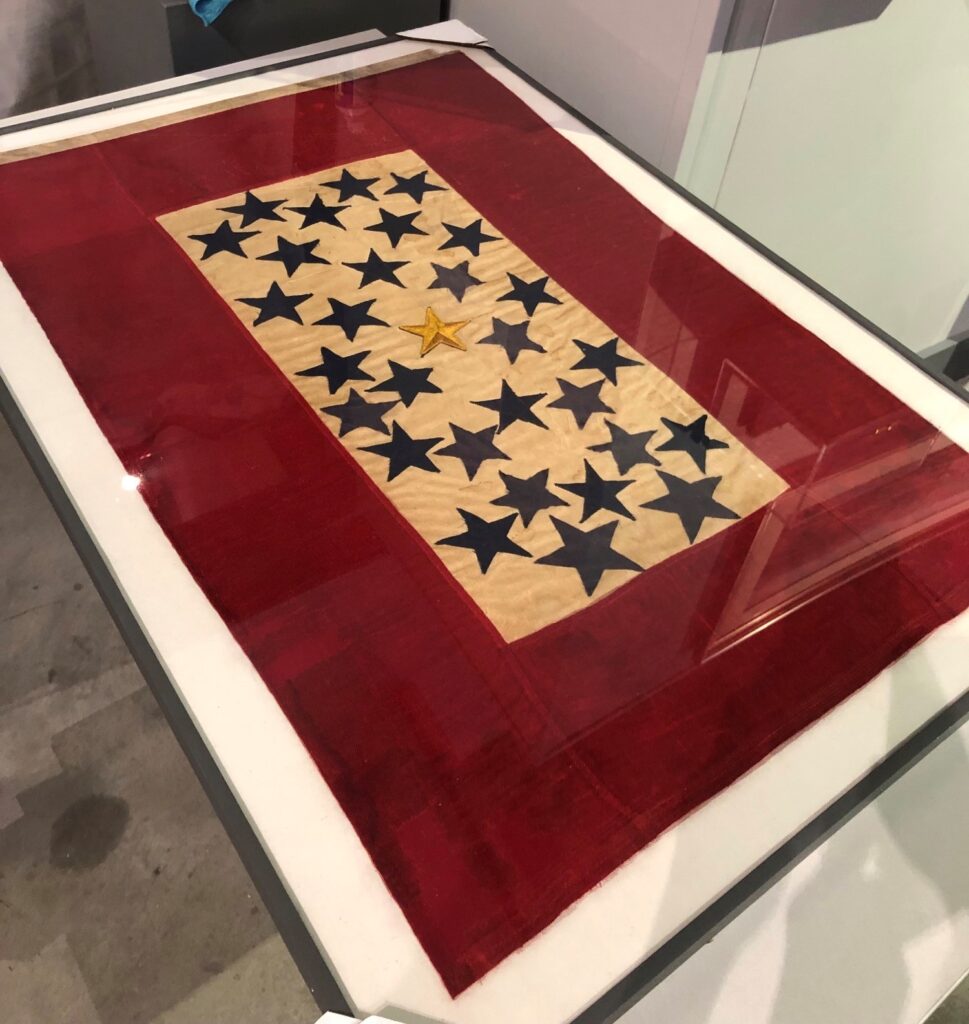
The use of service banners began during World War I when it became commonplace for families of soldiers to display them as symbols of patriotism and remembrance. The banners would often be displayed in windows where they could easily be seen by passersby who most likely also knew someone fighting overseas. Through these banners, a family’s sacrifice was made clear to everyone who laid eyes on the colorful pieces of fabric. Early on, various other organizations such as local businesses, churches, schools, and factories began using these banners as well to commemorate their members who were also serving to fight the Great War.
It is believed the service banner was originally designed by Robert L. Queisser, a U.S. Army Captain, to honor his two active-duty sons during World War I. Soon after, the flag was embraced by government officials and adopted on a wider scale.
A service banner can be recognized through its bold, red border and white space containing stars. Most stars are blue or gold, representing active-duty soldiers and those who died while in service, respectively. Mothers or spouses often handmade these banners with materials such as cotton and wool.
The Bethlehem Steel service banner in the NMIH collection has 29 blue stars with one gold star, suggesting they commemorated 29 active-duty employees and one who lost their life. Before the steel plant closed, this banner hung framed within the Brass Foundry building in the Welfare Room. It is believed that all 29 employees worked within the Brass Foundry and that this banner was specific to that building. A former Bethlehem Steel employee believes the gold star honors the life of a night shift employee and service member who died in Africa during WWII.
Discovery of the Service Banner
Trevor Shellhammer, a past employee of Bethlehem Steel, recovered the banner prior to the Brass Foundry being razed in 1998. He is well known for his knowledge and expertise in the steel industry and holds a B.S. and M.S. in metallurgy from Lehigh University. Mr. Shellhammer works as a consultant to ferrous and non-ferrous foundries across the country. Shellhammer was in the building to remove some equipment from the Brass Foundry machine shop to use at Homer Research Labs, and at that time also saved the banner in the welfare room. At this point, many artifacts had already been lost to time and he knew that he had to save the frayed service banner hanging in the former Welfare room.
The Welfare room was where employees would change and freshen up between shifts. Metal Baskets hung from the ceiling for each employee to place their clothes and boots in that would be raised and lowered via a chain. The service banner hung forgotten on a dividing wall in this area.
After recovering the banner, Shellhammer began his own research by tracking down former Brass Foundry employees. Unfortunately, many of the men were much older and could only remember a few facts, if any, about the men honored in the service banner. Other men who might have been able to shed light on the banner’s history had sadly passed away before Shellhammer got the chance to speak with them. Despite these difficulties in finding information, Shellhammer was able to find some history regarding the life behind the shining gold star.
Restoration of the Service Banner
Having sat in the unheated welfare room following the shutdown in December 1995 until early 1998, the banner was frayed and had numerous areas of water damage and discoloration. Newbold “Newbie” Richardson, a textile and costume specialist with over 25 years of experience in working with historic clothing, restored the banner. To complete the restoration, hair silk, a material as fine as human hair, was used. This involved a process of pulling the silk through a dye pen to recreate the color used in the original banner. The silk was then carefully sewn into the banner, correcting any cosmetic damage. Richardson’s work is meticulous and fragile.
Bethlehem Steel During War Time
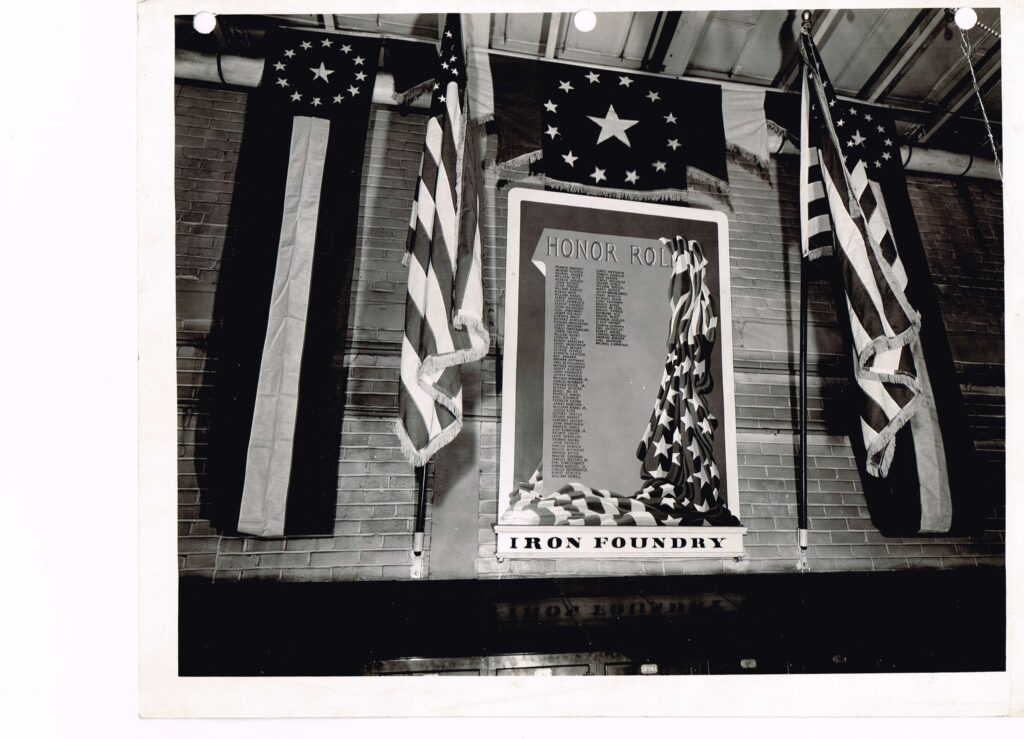
During World War II, Bethlehem Steel found ways to directly aid the Allied war effort. Shortly after Pearl Harbor, the Steel had $1.3 billion in orders to fill for the U.S. Military. A large amount of these orders came in the form of metal parts and other materials used in the production of aircraft and weapons. In fact, the Steel contributed to 70% of airplane cylinder forgings used by the U.S. Army and one-third of cannon forgings. They also kept over 200 thousand people employed throughout the course of the war. Bethlehem Steel’s contributions during World War II played a large role in the success of the U.S. Military and the Allies overall.
Active-duty employees were recognized by the company. Aside from the service banner, there is pictorial evidence that an Honor Roll also existed within the Iron Foundry Welfare Room. An Honor Roll is a framed piece of metal similar to a plaque with the names of servicemen engraved decoratively in the center. They are meant to be a more permanent symbol of those who served. This specific Honor Roll is believed to be from World War II and lists 117 Bethlehem Steel employees.
This service banner will be on view in the Museum’s lobby on Veterans Day (Friday, November 11, 2022). For more information on Veterans Day programming at NMIH, visit Veterans Day 2022 – National Museum of Industrial History (nmih.org)
Written by NMIH Intern Adrianna Wolf, East Stroudsburg University
